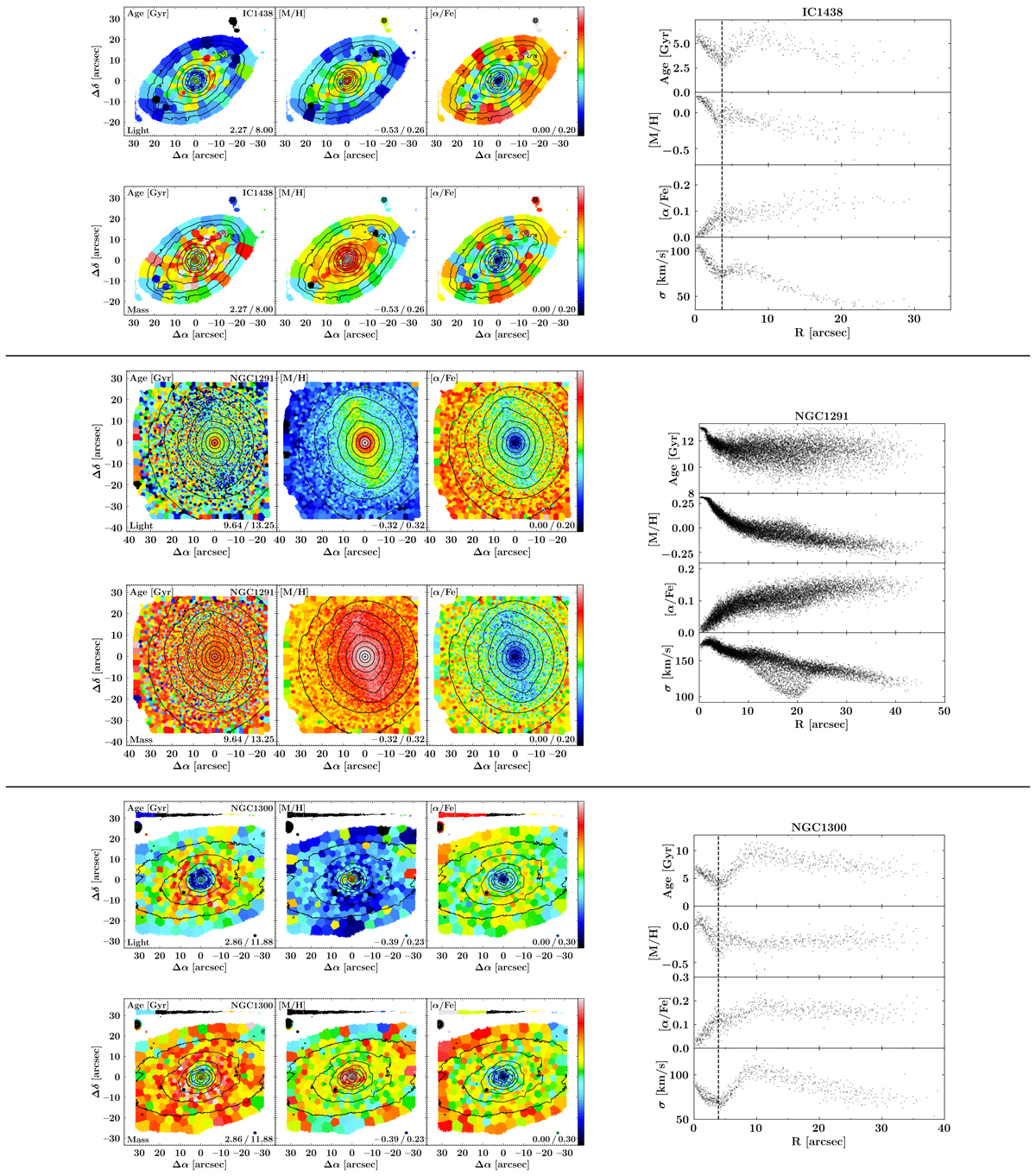Fig. C.1.

Left: maps of light-weighted (upper panels) and mass-weighted (lower panels) mean stellar population properties of the subsample without significant star formation in the nuclear ring. All maps have been generated with pPXF and include the modelling of [α/Fe] enhancements. The figures display age, [M/H], and [α/Fe] enhancements in the left-hand, centre, and right-hand panels, respectively, while different galaxies are separated by horizontal lines. The limits of the colour bar are stated in the lower-right corner of each panel. Based on reconstructed intensities from the MUSE cube, we display isophotes in steps of 0.5 mag. North is up; east is to the left. Right: radial profiles of light-weighted stellar ages (first panels), metallicities (second panels), [α/Fe] enhancements (third panels), and velocity dispersions (fourth panels) as a function of the galactocentric radius of all spatial bins in the field of view. The profiles have been deprojected using inclinations and position angles derived in S4G (Muñoz-Mateos et al. 2015), as presented in Table 1. The vertical dashed lines represent the kinematic radii of the nuclear discs, which was defined in G20 as the radius at which V/σ reaches its maximum in the region dominated by the nuclear disc. We note that for NGC 1291 no kinematic radius could be determined, as this galaxy is oriented almost perfectly face-on.
Current usage metrics show cumulative count of Article Views (full-text article views including HTML views, PDF and ePub downloads, according to the available data) and Abstracts Views on Vision4Press platform.
Data correspond to usage on the plateform after 2015. The current usage metrics is available 48-96 hours after online publication and is updated daily on week days.
Initial download of the metrics may take a while.


